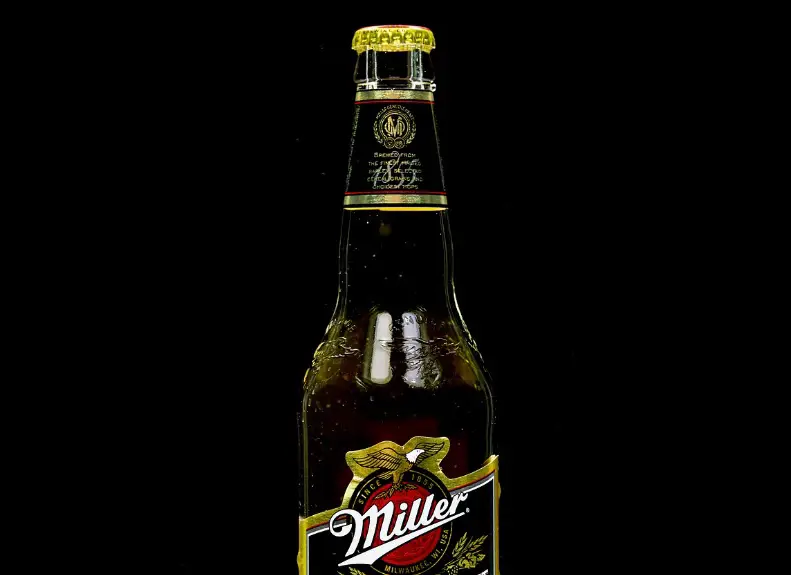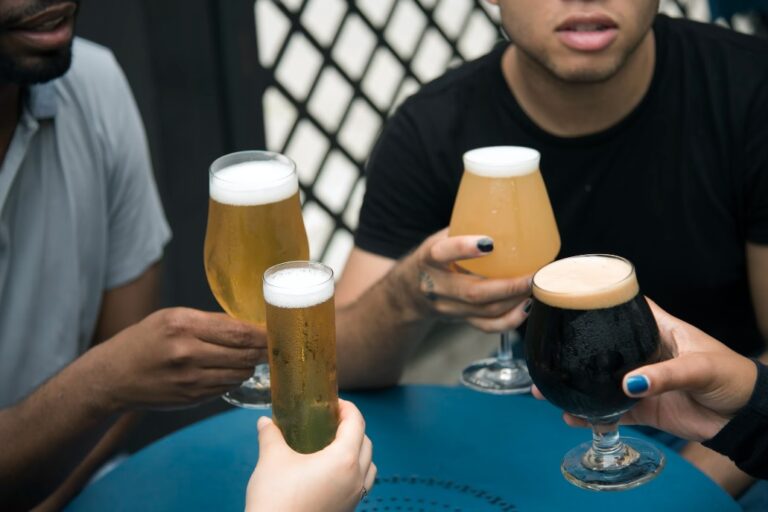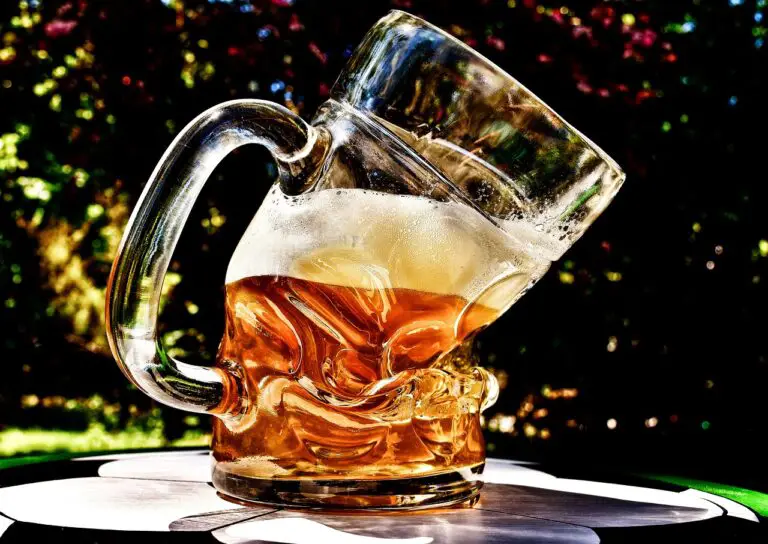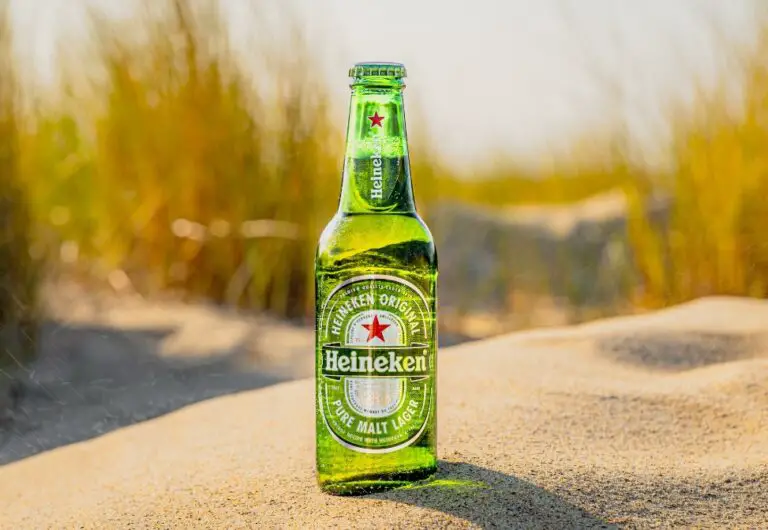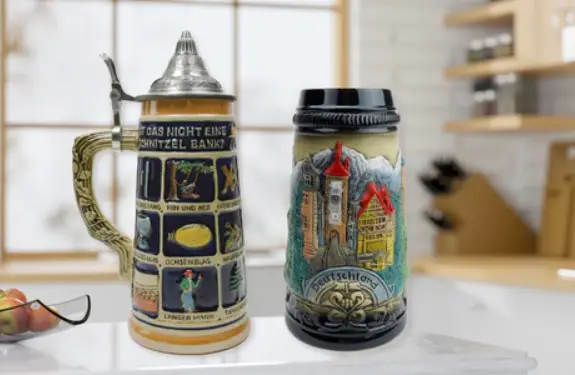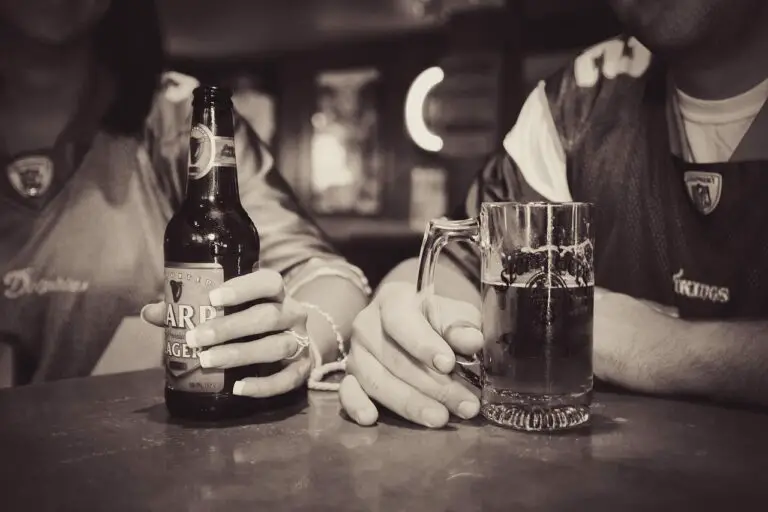Is Beer An Acquired Taste?
So, do we drink beer because we like it or because it’s an acquired taste? Is it cultural, or do we really like beer? Is beer an acquired taste? Let’s see!
Beer has often sparked debates over whether its appreciation is an inherent inclination or a taste that must be acquired.
Yes, beer can indeed be considered an acquired taste. While individual reactions to its flavors may vary, factors such as exposure to diverse styles, cultural influences, and personal experiences all play crucial roles in shaping one’s appreciation for beer. So, whether you find immediate pleasure in the first sip or discover a growing fondness over time, the journey of acquiring a taste for beer is as diverse and unique as the beverage itself.
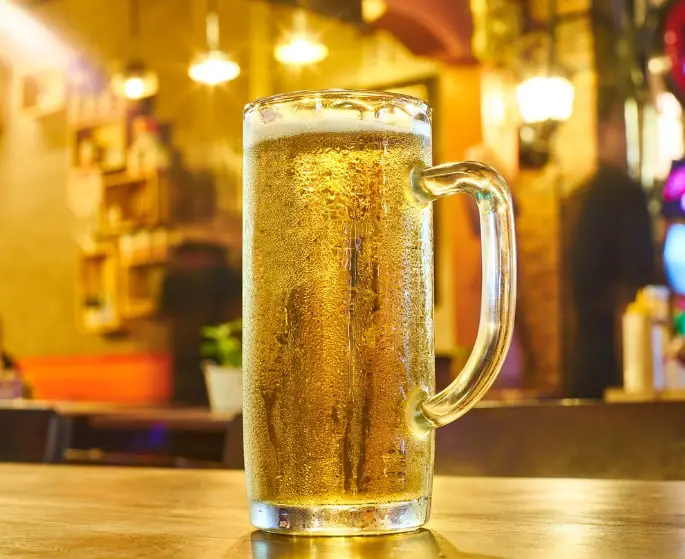
Inherent Taste Attraction vs. Acquired Taste
Let’s first take a look at the difference between inherent taste attraction (when you instantly like a flavor) vs. acquired taste (when you learn to love a flavor over time).
Inherent Taste Attraction: Inherent taste attraction refers to the natural, instinctive preference or aversion that individuals may have towards certain flavors or foods. Biological factors such as genetics and evolutionary history often influence this inclination. For example, humans tend to have an inherent preference for sweetness, as it is associated with energy-rich and ripe foods, while bitterness may be inherently aversive as it can signal potential toxicity. Inherent taste attraction is not necessarily learned or influenced by external factors but is rooted in our biological makeup.
Acquired Taste: An acquired taste, on the other hand, is developed over time through exposure, experience, and repeated consumption of a particular food or beverage. It implies that an individual may not immediately enjoy or appreciate the flavor but, through repeated exposure, develops a liking for it. Acquiring a taste often involves overcoming initial resistance or dislike and involves the brain adapting to and learning to enjoy the nuances of a specific taste. Cultural influences, social context, and personal experiences play significant roles in the development of acquired tastes.
In summary, inherent taste attraction is the instinctive liking or disliking of flavors based on biological factors, while acquired taste is the appreciation or enjoyment of a flavor that develops through exposure and experience.
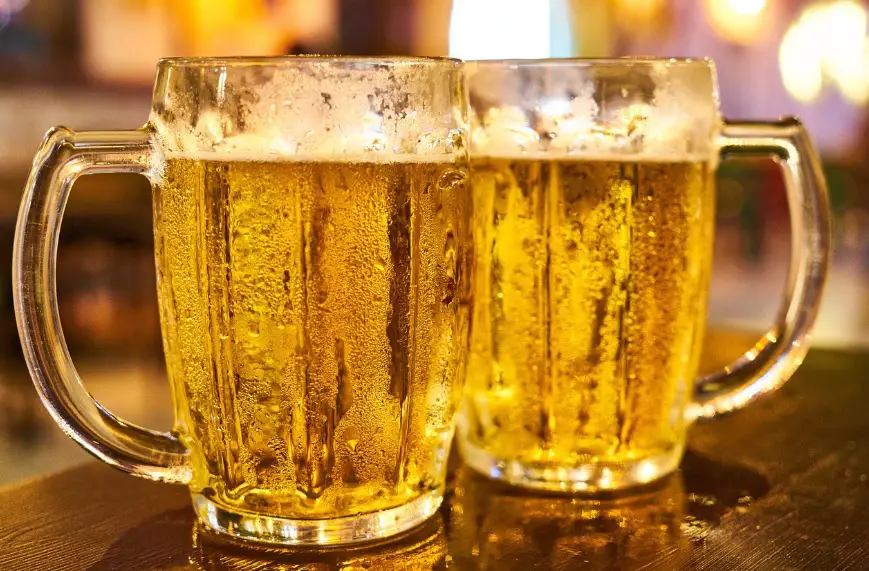
Beer – The Basic Flavor Profile
Basic Taste Profile of Beer:
Beer is a complex beverage with a rich and varied taste profile stemming from the interplay of its fundamental ingredients: malt, hops, yeast, and water.
- Malt: Malt provides the sweetness and body to beer. It is derived from malted grains, usually barley, and during the brewing process, enzymes convert the starches in malted grains into sugars, creating a sweet foundation for the beer.
- Hops: Hops contribute bitterness, aroma, and flavor to beer. The bitterness arises from compounds in hops known as alpha acids, which are released during brewing. The range of hop varieties allows brewers to craft beers with a spectrum of bitterness levels, from mildly hoppy to intensely bitter.
- Yeast: Yeast is responsible for fermenting the sugars in the malt, producing alcohol and carbonation. It also contributes subtle flavors to the beer. Different yeast strains can impart fruity, spicy, or earthy notes, adding depth to the overall taste.
- Water: Often overlooked but crucial, water serves as the base for the beer. The mineral content of water can influence the beer’s taste, with some regions known for producing beers with distinct mineral profiles.
What Makes Beer Bitter and Flavorful:
Bitterness in beer primarily comes from the hops. Brewers carefully select hop varieties and determine the timing of hop additions during brewing to achieve the desired level of bitterness. The bitterness can balance the sweetness from the malt, creating a harmonious and well-rounded flavor profile.
Flavorful aspects of beer encompass a wide range of tastes, including malt sweetness, hop-derived citrus or pine notes, yeast-induced fruitiness, and even hints of spices or herbs. The combination of these elements results in a diverse array of beer styles, from light and crisp lagers to robust and complex stouts.

Initial Reactions to Beer Flavors:
Individuals often experience diverse initial reactions when tasting beer for the first time. The bitterness from hops, especially in styles like India Pale Ales (IPAs), can be surprising and even off-putting for some. The sweetness from malt may be more immediately appealing to others. The carbonation adds a refreshing quality, while the various flavor nuances may be subtle or pronounced depending on the beer style.
Personal preferences, exposure to different taste profiles, and cultural background can influence initial reactions to beer flavors. Some may find an immediate liking for the complex flavors of certain beers, while others may need time and exposure to develop an appreciation for the intricacies of the beverage. As the saying goes, acquiring a taste for beer can be a journey, with each sip offering an opportunity to explore and refine one’s palate.
Beer Flavors – The Cultural Aspect
Beer, beyond being a beverage, is a reflection of culture, tradition, and local preferences. The distinct tastes of beers in different regions are deeply rooted in the brewing histories and cultural practices unique to each locale.
Europe vs. American Beer Styles:
Europe: European beer traditions are diverse and have deep historical roots. Countries like Germany, Belgium, the United Kingdom, and the Czech Republic have each developed unique beer styles.
- Germany: Known for its purity law (Reinheitsgebot), Germany is famous for lagers such as Pilsners and Bocks. The emphasis on quality and tradition has given rise to beers with clean, crisp profiles.
- Belgium: Belgium is renowned for its diverse and often complex beer styles. Trappist ales, Lambics, and Abbey beers showcase a wide range of flavors, including fruity esters, spicy phenols, and sour notes.
- United Kingdom: Traditional British ales, such as Bitters, Porters, and Stouts, are characterized by their malt-forward profiles, often featuring caramel and toffee notes.
- Czech Republic: Home to the original Pilsner, Czech beers are known for their balance and drinkability. Pilsners from this region set the standard for the pale lager style.
- United States: The American beer scene has undergone a revolutionary transformation, particularly with the rise of the craft beer movement. American brewers have embraced innovation, pushing the boundaries of traditional styles.
- Craft Beer Movement: The craft beer movement in the United States has led to an explosion of creativity. Breweries experiment with ingredients, brewing techniques, and styles, resulting in a diverse range of beers. IPAs (India Pale Ales) with bold hop flavors, barrel-aged stouts, and sour ales are prominent examples.
- Innovation and Diversity: American craft brewers are known for their willingness to innovate. They incorporate local ingredients, experiment with unique brewing processes, and create hybrid styles that may draw inspiration from various beer traditions worldwide.

Craft Beers:
- Flavor Exploration: Craft breweries, both in Europe and the United States, are at the forefront of flavor exploration. Craft brewers often prioritize quality, flavor complexity, and unique characteristics, challenging conventional norms.
- Local and Artisanal Focus: Craft breweries emphasize locality, often sourcing ingredients from nearby farms and drawing inspiration from regional tastes. This focus on artisanal production contributes to diverse flavors within the craft beer landscape.
In essence, the cultural aspect of beer is a dynamic interplay between tradition and innovation. Whether sipping a centuries-old Belgian Trappist ale or a cutting-edge American craft brew, beer enthusiasts are treated to a rich tapestry of flavors shaped by the cultural contexts in which these beverages are brewed.
The Biological Factors of Acquiring a Taste for Beer
Genetic Predispositions Towards Bitterness:
- TAS2R Receptors: Genetic variations in taste receptors, specifically TAS2R receptors, play a crucial role in an individual’s sensitivity to bitterness. Some people possess a heightened sensitivity to bitter flavors, which are prevalent in hops, a key component of beer. This genetic predisposition can influence initial reactions to beer, with those less sensitive to bitterness potentially finding it more palatable from the start.
- Evolutionary Perspective: From an evolutionary standpoint, bitterness often signals the presence of potentially harmful substances. Individuals with a higher tolerance for bitter tastes may have been better equipped to detect and avoid toxic plants. Therefore, genetic factors can shape the degree to which individuals are inclined to enjoy or reject the bitter notes in beer.

Sensory Adaptation Over Time:
- Neurological Adaptation: The human palate is remarkably adaptable. Over time, repeated exposure to certain flavors, including the bitterness in beer, can lead to neurological adaptations. As individuals consume beer more frequently, the brain may become accustomed to and, in some cases, even develop a preference for the bitter elements present in various beer styles.
- Cognitive Association: Sensory adaptation is a neurological process and involves cognitive associations. Positive experiences linked to the act of consuming beer, such as socializing with friends or enjoying a relaxing evening, can contribute to an individual’s ability to adapt to and appreciate the flavors over time.
Impact of Age on Beer Preferences:
- Cultural and Generational Influences: Cultural and generational factors can also influence beer preferences. Older individuals may have grown up with different beer styles and cultural norms, influencing their preferences. For example, individuals who were exposed to milder beer styles earlier in life may continue to prefer those styles as they age.
- Changing Sensitivity: As people age, changes in taste sensitivity, smell perception, and overall sensory experiences can occur. Some older individuals may find that their preferences shift towards beers with bolder flavors, as these can be more easily detected and appreciated.
- Socialization and Tradition: The impact of age on beer preferences may also be tied to socialization and tradition. Older individuals may have established beer-drinking habits and preferences based on a lifetime of experiences, creating a sense of familiarity and comfort with certain styles.

Exposure and Repetition
Acquiring a taste for beer is a dynamic and evolving process, often influenced significantly by exposure to diverse beer styles and the repetition of tasting experiences. Here’s a closer look at how exposure and repetition contribute to the development of one’s palate for beer:
Exposure to Diverse Beer Styles
- Expanding Palate: Exposure to various beer styles is key to broadening one’s palate. Each beer style comes with its own unique combination of flavors, aromas, and characteristics. Trying different styles introduces individuals to a spectrum of tastes, from the malt-forward sweetness of a stout to the hoppy bitterness of an IPA.
- Cultural and Regional Influences: Exploring beers from different cultures and regions provides a deeper understanding of the diverse brewing traditions worldwide. Whether it’s a Belgian Trappist ale, a German lager, or an American craft beer, each style contributes to the tapestry of flavors that shape an individual’s appreciation for beer.
Gradual Exploration of Beer Flavors
- Incremental Tasting: Acquiring a taste for beer often involves a gradual and incremental approach. Starting with lighter and less intense styles allows individuals to ease into the world of beer flavors. Over time, as the palate becomes more accustomed to the nuances, individuals may naturally progress to more complex and robust beer styles.
- Tasting Flights: Tasting flights, which consist of small samples of various beers, are a popular method for exposing individuals to a range of flavors in a single sitting. This approach enables enthusiasts to compare and contrast different styles, identifying preferences and developing a more discerning palate.
Impact of Repeat Experiences on Taste Perception
- Desensitization to Bitterness: The bitterness of certain beer styles, particularly those with high hop content like IPAs, can be an acquired taste. Repeat exposure to bitterness allows the palate to adapt and, in some cases, become desensitized. What may have been initially perceived as overpowering bitterness can transform into a nuanced and enjoyable aspect of the beer.
- Identification of Personal Preferences: Repetition in tasting contributes to the identification of personal preferences. Individuals may discover specific flavor profiles, aromas, or styles that resonate with them. This process of repetition helps refine taste preferences, leading to a more intentional and enjoyable beer-drinking experience.
Culmination of Beer Drinking Experiences
- Social Context and Shared Experiences: Beer is often enjoyed in social settings, and shared experiences can significantly impact taste perception. Tasting and discussing beers with friends or fellow enthusiasts contribute to a communal understanding of flavors and preferences, enriching the overall beer-drinking experience.
- Memory and Association: Repeat experiences with beer create lasting memories and associations. Positive associations, such as memories of enjoyable gatherings or memorable occasions, can enhance the overall enjoyment of beer and contribute to the development of a positive taste association.
In conclusion, exposure to diverse beer styles and the repetition of tasting experiences are pivotal in the journey of acquiring a taste for beer.
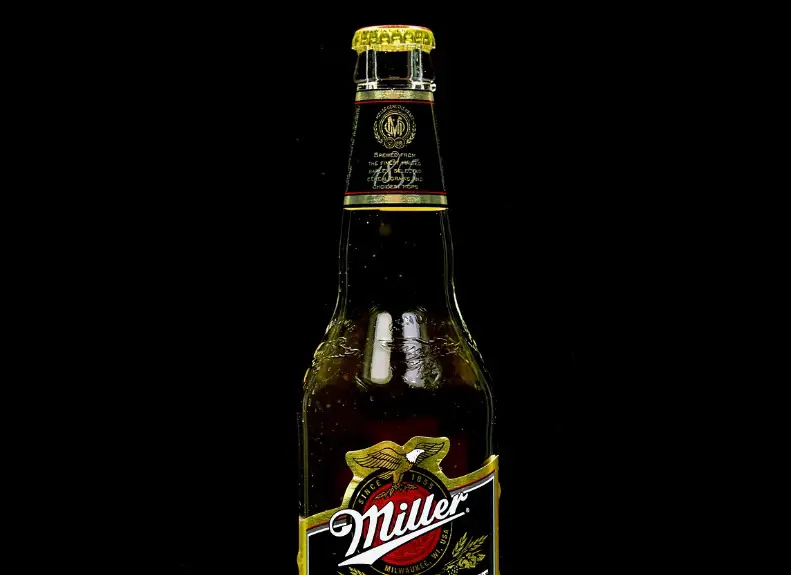
Challenges in Acquiring a Taste for Beer
Acquiring a taste for beer is not always a smooth journey, and individuals may encounter several challenges, including initial dislike and resistance. Overcoming these hurdles often requires a combination of open-mindedness, exposure, and a willingness to reassess preconceptions.
Flavor Complexity
- Challenge: Beer is a complex beverage with a diverse flavor profile. For those new to beer, the combination of bitter hops, malt sweetness, and yeast characteristics can be overwhelming and challenging to appreciate.
- Overcoming It: Gradual exposure to different beer styles, starting with lighter and less intense options, can help individuals acclimate to the complexity of flavors. Tasting flights or sampler packs offer a variety of styles in smaller quantities, making it easier for individuals to explore without being overwhelmed.
Bitterness Perception
- Challenge: Bitterness, a characteristic often associated with hops in beer, can be a significant barrier for some individuals. The initial perception of bitterness may lead to an immediate dislike.
- Overcoming It: Trying beers with lower hop bitterness levels, such as wheat beers or light lagers, can provide a gentler introduction to the world of beer. As the palate adapts over time, individuals may find themselves more receptive to and even appreciative of the bitterness in certain styles.
Overcoming Negative Preconceptions
- Challenge: Preconceived notions about beer, often formed based on stereotypes or limited exposure to specific styles, can create resistance. Negative experiences with a particular type of beer may lead to an aversion to the entire category.
- Overcoming It: Actively challenging negative preconceptions involves embracing a mindset of exploration. Trying a diverse range of beers, including those from different regions and styles, can debunk stereotypes and reveal the breadth of flavors that beer has to offer. Engaging with knowledgeable enthusiasts or beer professionals can provide valuable insights and guidance.
Cultural and Social Influences
- Challenge: Social and cultural factors can influence taste preferences. Peer pressure or cultural norms may contribute to individuals trying to conform to certain beverage choices, leading to a forced or unauthentic attempt at acquiring a taste for beer.
- Overcoming It: Authenticity is crucial in the journey of acquiring a taste for beer. Individuals should feel empowered to explore at their own pace and make choices based on personal preferences rather than external influences. Engaging in beer-tasting events or brewery tours can offer a more relaxed and educational setting for discovering flavors.
Developing a Palate
- Challenge: Developing a nuanced palate takes time and patience. Recognizing and appreciating subtle flavors in beer may be challenging for those who are not accustomed to the sensory intricacies of different styles.
- Overcoming It: Regular and intentional tasting, paired with reflection and discussion, can aid in the development of a more refined palate. Exploring the diversity within beer styles and identifying specific flavor notes can be a gradual but rewarding process.
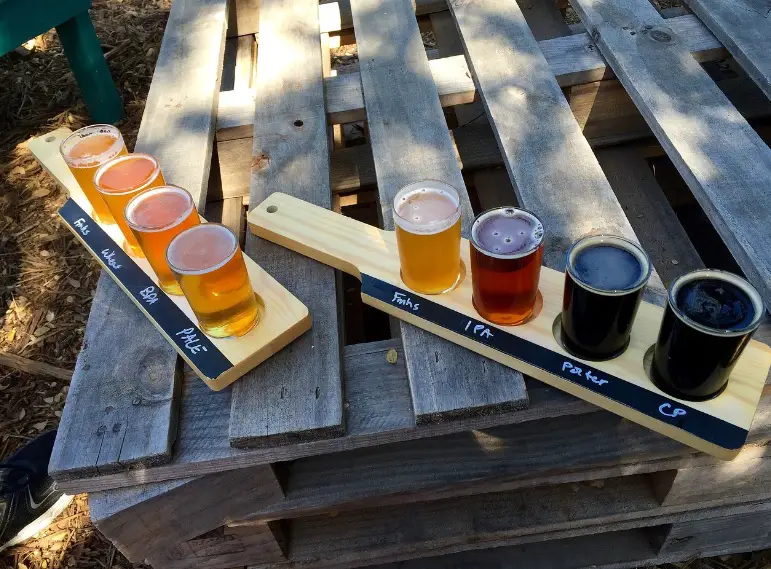
Wrapping It Up
The question isn’t just whether we like it but whether we learn to like it. The journey of acquiring a taste for beer involves a mix of initial reactions, exposure to diverse styles, and the willingness to overcome challenges. Whether it’s the first sip or the hundredth, our relationship with beer evolves, shaped by personal experiences, cultural influences, and the dynamic nature of our palates. So, do we like beer, or do we learn to like it? Perhaps it’s a bit of both—a delightful blend of inherent preferences and the adventurous spirit of exploration. Cheers!

I am a young architect with a passion that goes beyond blueprints… it’s beer! undertherosebrewing.com is more than just a blog, it’s a manifestation of my lifelong dream to explore, read, and learn everything about beer. Join the blog on this unfiltered and genuine adventure into the heart of beer culture. Cheers!

